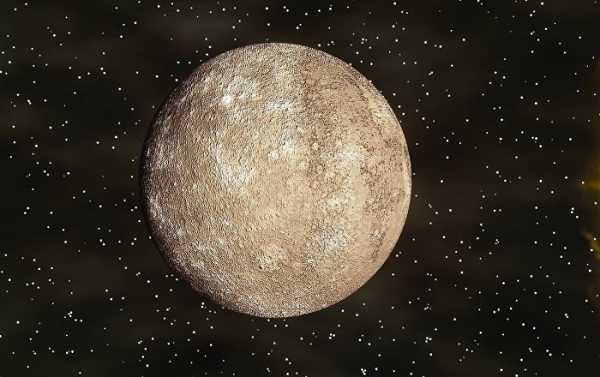
Mercury is the smallest planet in the solar system and the closest to our sun; temperatures climb as high as 750 degrees Fahrenheit on its cracked and cratered surface, making it “completely inhospitable”; however, Mercury holds many mysteries that scientists are attempting to probe.
Planet Mercury possibly once possessed the ingredients for life, a new study of re-examined data collected by the US space agency NASA has revealed.
Research, entitled “Vast Collapsed Terrains on Mercury Might be Windows Into Ancient – Possibly Habitable – Volatile-Rich Materials” spearheaded by Planetary Science Institute scientist Dr Alexis Rodriguez, studied Mercury’s cracked and cratered terrain in closer detail, as the “inhospitable” planet boasts a surface with temperatures soaring as high as 750 degrees Fahrenheit (400 Celsius).
The planet’s terrain was observed back in 1974, as NASA’s Mariner 10 probe flew by Mercury.

The Sun and Mercury
However, volatiles – elements and chemical compounds that can swiftly switch states underneath Mercury’s surface – may be the reason for the “chaotic surface terrain”, claim the research team. And the fascinating element of this theory is that volatiles, like water, are essential for life as we know it, triggering additional interest among “alien life hunters”.
Consequently, potential presence on Mercury is an exciting development for those hunting for alien life.
While planet Mars has a similarly “chaotic terrain”, its landscape is believed to have been etched out by outflow channels. The latter are extremely long and wide swathes of scoured ground extending for many hundreds of kilometres and thought to have been carved by huge outburst floods.
As there are no such channels on Mercury, the team of experts linked the terrain to a powerful asteroid impact.
The Caloris basin – a massive crater visible on the planet’s surface – serves as a reminder of that jolt.
Prior to the findings of the study, experts believed Mercury’s frenzied terrain was created by a succession of earthquakes triggered there in the wake of that asteroid impact.
But an “unfeasible time scale” is now suggested as negating this theory.
Co-author of the study Dr. Daniel Berman of the Planetary Science Institute, said:
Dr Alexis Rodriguez was cited by Space.com as saying the findings were the “first, kind of, smoking gun.”
The features of the terrain were dated by the scientists using data and images from the NASA MErcury Surface, Space ENvironment, GEochemistry and Ranging (MESSENGER) spacecraft, which was able to observe Mercury from orbit ov a span of years between 2011 and 2015.
The observations determined the ages of surface features including the “chaotic” terrain and the asteroid-formed crater.
What stood out in the observations was that small features like minute craters remained intact throughout the landscape.
The team’s findings suggest that if earthquakes upon asteroid impact formed the chaotic terrain, the smaller features would not have been preserved, thus bringing into question the previous notion about the chaotic terrain’s formation as potentially flawed.
Sourse: sputniknews.com






